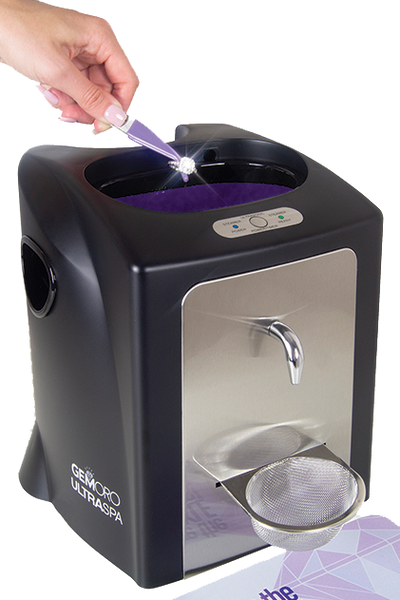Watch Movement Guide: Understanding the Inner Workings
Have you ever wondered how a watch works? What makes the hands go round? How does it stay precisely the same to actually mark time?
The thing that makes a watch work is the watch movement. There are three types of movements: manual, automatic, and quartz. Also known as a “calibre” it works like an engine in a watch. It moves the hands on your watch, which drives the timekeeping function.
Continue reading to learn more about the different processes involved in making your wrist watch work.
The Mechanics of a Watch
Manual and automatic movements rely on mechanical parts, like gears and springs, to make the minute hand, second hand, and hour hand move at the appropriate time. Expert craftsmen have refined this process over the past 600 years.
Quartz watch movements use an electrical circuit and need a battery. They are more accurate than their manual and automatic counterparts. Many collectors and watch connoisseurs prefer the mechanical movements though specifically because of their craftsmanship.
One way to tell which movement your watch has is to look at the second hand. If the second hand has a smooth, sweeping motion across the face of your watch it’s a mechanical movement. If it moves in a start-stop, tick-tick-tick manner it is a quartz movement.
Manual Watch Movement
The oldest type of watch movement is a manual, or hand-wound movement. This traditional movement dates back to the 16th century. Most sources refer to Peter Henlein as the inventor. He started making small, portable spring-powered brass clocks in Nuremberg, Germany around 1510.
The mechanics of a watch start with the crown. Manual movements need to be wound every day in order to work properly. This is done by pulling out the crown, or the wheel on the side of the watch, to its first position and turning it clockwise until you feel a slight resistance.
The crown winds up a coiled mainspring inside the watch, causing it to store energy. An escapement takes the energy stored in the mainspring and moves it through a series of small gears to the balance wheel.
The balance wheel oscillates n a circular motion between five and ten times a second. Then the dial train transmits this energy to the clock hands to make them move according to the meter of the balance wheel.
This constant movement creates friction between the metal gears. Jewel bearings, commonly made of synthetic rubies, help reduce friction and improve the performance and accuracy of the timing mechanism.
To set the time on a manual watch, pull the crown out to the second position. Turn the crown clockwise until the hour and minute hands reach their appropriate place. To avoid undue wear-and-tear on your mechanical components, try not to turn the crown counter-clockwise any more than necessary.
Automatic Watch Movement
The self-winding or automatic wrist watch was invented by the Swiss watchmaker Abraham-Louis Perrelet in the 1770’s. However, it wasn’t until World War I that this watch mechanism became popular as it was more convenient and reliable than other watches. These watches are wound by wearing them. There is no need for a daily manual winding unless it has not been worn for a long period of time.
https://www.livwatches.com/blogs/everything-about-watches/automatic-watch-movements-ultimate-guide
The components of an automatic movement are very similar to those of a manual. The difference is the addition of a rotor. A rotor is a half-moon-shaped weight attached to a series of gears that are attached to the mainspring of the movement. The rotor swings freely in any direction as one’s wrist moves. This swinging movement moves a series of gears to turn, which winds the mainspring of the watch. Once the mainspring is wound fully, a small clutch will disengage it from further winding.
Then, the watch works similarly to a manual movement. The wound-up mainspring transfers energy to the escapement through the gear train. The escapement sends energy out to the balance wheel. This wheel beats back and forth at a consistent rate. After a certain number of beats, the dial train is able to move the hands of the watch forward.
Quartz Watch Movement
The most accurate and cost-effective movement produced today is the quartz movement. It does not require winding like the mechanical watches do because it uses a battery for its power source. It was first introduced by the Japanese watchmaker Seiko in December of 1969.
The components of a quartz movement center around the batter instead of the mainspring. An integrated circuit carries a constant electrical charge between the battery and a quartz crystal. The quartz vibrates from the electricity and this generates a voltage. A quartz crystal vibrates at a rate of 32,768 vibrations per second. The stepping motor sends every 32,768th electrical pulse to the dial train, which then advances the hands of a watch.
Quartz movements are more reliable and accurate timekeepers. However, their batteries only last between 12 and 24 months at a time, then need to be replaced. It’s imperative to replace batteries as soon as they stop working because they can leak acid and damage the movement’s parts.
The Inner Workings of a Watch
While they may initially seem mysterious, the inner workings of a watch movement are really quite straightforward. Each movement has its own charms and advantages.
Whether you prefer the artistry and craftsmanship of mechanical watches or the technical precision and accuracy of a quartz watch is up to personal preference. By understanding how they work, you can keep your watch working perfectly for years to come.
Contact us with any questions you have about your watch or its internal components.



